Oily Skin

Oily Skin
Oily or greasy skin is particularly common in teenagers and also young adults. A result of excessive productions of sebum, it is characterized by a shiny appearance to the T-zone area. The epidermis teds to thicken and the pores dilate, thus giving the skin a slightly rough and irregular texture. It is also more likely to suffer from acne and spots.

Characteristics
Healthy and balanced, smooth to touch

Skin Health Objectives

Home Care Recommendation
MD Dermatics
Other Skin Services
Normal Skin

Normal skin is in a well-balanced state of suppleness, elasticity, hydration and color and feels soft and smooth to touch. Rarely break outs and feels comfortable after cleansing, neither tight nor dry. However, normal skin can change due to poor skincare regime, excessive sun, wind or cold exposure. Having a poor diet and lifestyle can take their toll too.
Dry Skin
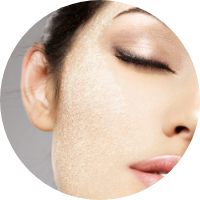
Dry Skin is often characterized by feelings of tightness due to a lack of sebum or oil. It has fine texture with no visible pores and at times may be rough and scaly in areas, it also shows lines and wrinkles easily. It rarely suffers breakouts. The problem lies in the poor epidermal function and damage to the lipid barrier. As the levels of natural lipids and oils drop, the skin’s ability to retain water also reduced, leaving the skin dry and often dehydrated.
Sensitive Skin
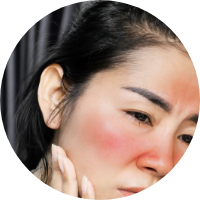
Skin can be sensitive due to multitude factors which include environmental and sun damage. Sensitive skin can be really difficult to work with as it can be very prone to acne / inflammation or dry patches. Highly reactive to specific products / ingredient which might cause breakout and redness to the face with the slightest usage.
Oily Skin
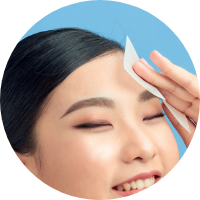
Oily or greasy skin is particularly common in teenagers and also young adults. A result of excessive productions of sebum, it is characterized by a shiny appearance to the T-zone area. The epidermis teds to thicken and the pores dilate, thus giving the skin a slightly rough and irregular texture. It is also more likely to suffer from acne and spots.
Combination Skin
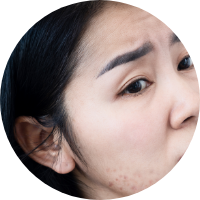
There are two forms of combination skin, the oily & normal and also dry / normal. For the oily & normal combination skin, the T-zone is oily while other area of the face is normal. While the dry / normal combination skin, the T-zone may be normal but with dry patches on the cheeks.
Acne Skin
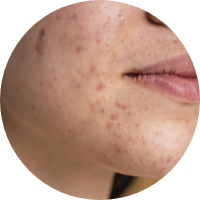
Acne is a common skin condition and breakouts at all ages have become very common than ever. It is characterized by breakouts of pimples, whiteheads and blackheads, and at times can cause scarring. Environmental factors such as haze, pollution and weather, and even bacteria from mobile phone use can cause havoc on the skin. When men and women age, hormonal level tend to fluctuate thus leading to breakouts.
Frequently Asked Questions
The overproduction of sebum by the sebaceous glands causes oily skin. These glands are found beneath the surface of the skin. Sebum is a fat-based greasy material. However, too much sebum can cause oily skin, which can lead to closed pores and acne.
Many of the same drugs that are used to treat acne are also used to treat oily skin. Topical creams containing adapalene, tretinoin, or tazarotene, which alter the way pores secrete sebum and so reduce oiliness, can also be prescribed by doctors.
Oily skin is caused by the sebaceous glands producing too much sebum. These glands are located beneath the skin’s surface. Sebum is a fatty, fat-based substance. Overproduction of sebum, on the other hand, can result in oily skin, which can contribute to clogged pores and acne.
While oil is good for maintaining elasticity of your skin, it can also be a major cause of skin imperfections. Thus, oily skin must be treated with utmost care to control the oil production and prevent blemishes from breaking out.
Oily skin is often treated with oil control cosmetics products. Changing your cosmetics to water-based products can also help reduce the oil production on your skin.
Washing your face twice a day is important to keep your skin free from oil. It is also important to consult your skin care specialist for advice on the right products for your skin type and the proper routine to follow for oil control.
RESTORE YOUR SKIN
Not all skins are created equal but that’s what makes you unique! Contact us today for the customised acne and facial treatment.

